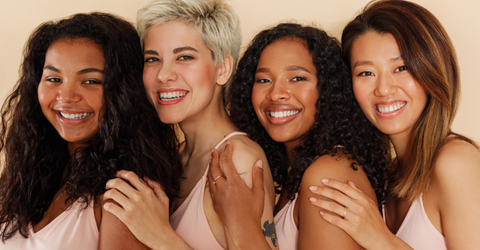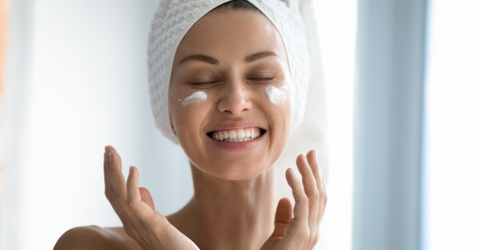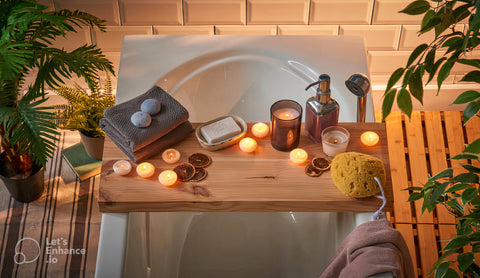Unravelling the mystery of your skin tone isn't just about finding the right foundation shade—it's about embracing your unique beauty palette. Today's cosmetic world offers a plethora of products, each tailored to match specific skin tones and undertones, ensuring everyone finds their perfect match effortlessly.
Your skin tone is given at birth, a beautiful gift from all your ancestors. As there are as many skin tones as people on earth, identifying our skin tone is something that might be challenging to describe. And though all skin colours are intensively gorgeous, knowing your skin tone will help to know what makeup colours to choose or clothes to wear. By learning your skin tone, you can choose flattering shades of clothing, which shade of foundation, concealer, lipstick, eyeshadow, to apply or what hair colour suits you best.
Unlike past years, when light, medium and dark categories were enough to find a decent match, today's wide range of skincare and makeup lines have more targeted shade ranges which ensures a better understanding of our unique skin tone.
However, figuring out your exact skin tone doesn't have to be confusing. First you need to learn some new concepts. Let's dive into it.
Skin Tones and Undertone
First of all, you want to familiarise yourself with two terms: surface colour and undertone.
Your skin tone comprises two essential elements: surface colour and undertone. Surface colour is how you'd describe your skin to others, while undertone is the subtle hue beneath the surface that remains constant regardless of tanning or lightening.
Skin Tones
Identifying your surface colour is the first step. Whether you fall into the fair, medium, or dark categories, understanding your base tone helps navigate through makeup and clothing options.
There are already three (broad) colour categories that your skin may fall into, namely:
Fair - The lightest range of skin tones. You probably burn easily and have fair or red hair. In general, people with skin considered "fair" have warmer undertones than fair skinned people. You can probably get a tan in the summer.
Medium - You have a tanned skin tone with warm golden or olive undertones.
Dark - the deepest range of skin tones.
You probably already have a good general idea of the colour of your skin surface, but if you're trying to tell the difference between light and fair, for example, there are a few things that can help.
Some external factors can affect the overall skin tone. A tan is one of the most common examples, however rosacea, hyperpigmentation, dark spots, acne and overall redness can affect your skin colour perception.
How to Determine the Colour of the Surface?
Gauging your surface colour isn't rocket science. From examining your jawline to seeking assistance from a friend or trying professional tests at beauty stores, there are myriad ways to determine your surface colour accurately.
Ask a Friend - Probably the easiest way to determine the colour of the surface is to ask a friend or family member. Especially if you're between two colour categories, it can be helpful to have a second opinion.
Look at Your Jaw - Often your jawline is the best place to see your "pure" surface colour unobstructed. Since jawlines aren't usually affected by typical skin conditions, this can be a great area to get an idea of your true skin colour.
Get Tested at Your Local Beauty Store - In the past few years, many beauty stores have started offering skin tone foundation matching tests, and it's fun to be taken care of within less than 10 minutes. If you won't settle for anything less than an expert opinion, this is the method for you.
Undertone
The undertone, often overlooked, misunderstood or ignored, is the secret sauce that completes the skin tone puzzle. The undertone is exactly what it sounds like; the colour tone below the surface colour of your skin. Unlike surface colour, which can change with tanning or some lightening products, your undertone remains constant.
Cool, warm, or neutral—identifying your undertone requires a bit of detective work involving vein checks, eye colour observations, and paper tests.
- Cool - Characterised by a bluish undertone to the skin.
- Warm – Golden or peach undertones.
- Neutral – A neutral undertone is neither cool nor warm. For darker skin tones, a neutral undertone would have a beautiful olive undertone.
How to Determine Your Undertone?
Discovering your skin's unique tone isn't just about cosmetics—it's about embracing your individuality and celebrating the beauty in diversity.
Armed with the knowledge of your surface colour and undertone, discovering the ideal foundation shade or clothes to wear becomes a breeze. From warm golden hues to cool blue undertones, today's foundations and clothes cater to every skin tone and undertone, ensuring a flawless match.
With the right tools and tips, you're one step closer to unlocking the secret to radiant, confident skin. Our recommendation? Try them all and use the average of your results to confirm your undertone.
Check Your Veins - Grasp your wrists and check the veins underneath. Those with a warm undertone have green coloured veins, while blue veins are a sign of a cool undertone. If your veins look blue-green, you may have a neutral undertone.
Eye Colour Observations - Grasp your wrists and check the veins underneath. Those with a warm undertone have green coloured veins, while blue veins are a sign of a cool undertone. If your veins look blue-green, you may have a neutral undertone.
Paper Test - Grab a piece of bright white paper and hold it to your bare face. If your skin looks yellowish against the sheet, it means you have a warm undertone. Does it look pink? Then you are cool toned. If you look more green or grey, you can be neutral.
Finding Your Perfect Match
Armed with the knowledge of your surface colour and undertone, discovering the ideal foundation shade and clothes to wear becomes a breeze. From warm golden hues to cool blue undertones, today's foundations cater to every skin tone and undertone, ensuring a flawless match.
Discovering your skin's unique tone isn't just about cosmetics or fashion—it's about embracing your individuality and celebrating the beauty in diversity. With the right tools and tips, you're one step closer to unlocking the secret to radiant, confident skin.
One thing everyone can apply no matter what their skin tone or skin type is our MaGéAu Naturel 100% natural skincare. We are currently offering 10% when participating to our Glowing Skin challenge. Order now!





Comments (0)
There are no comments for this article. Be the first one to leave a message!